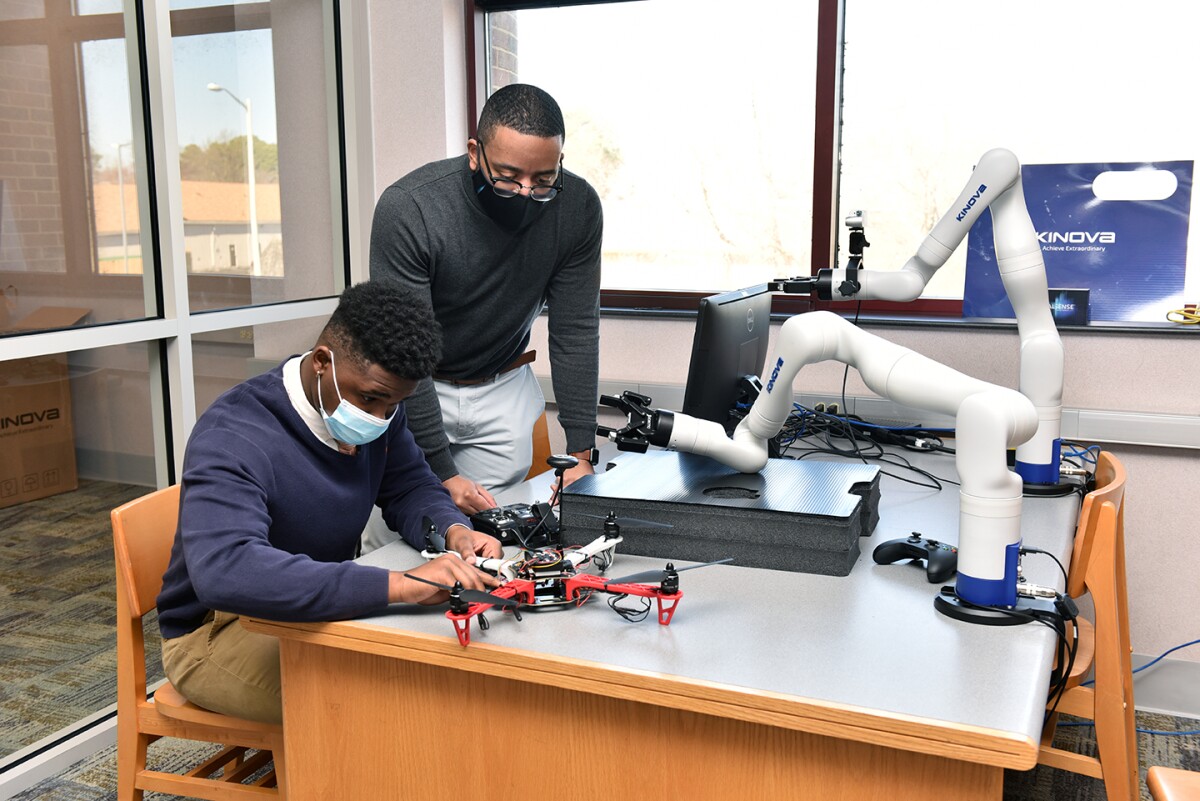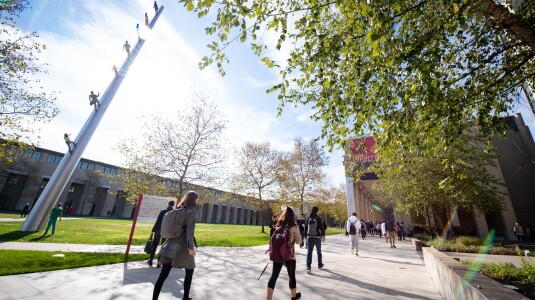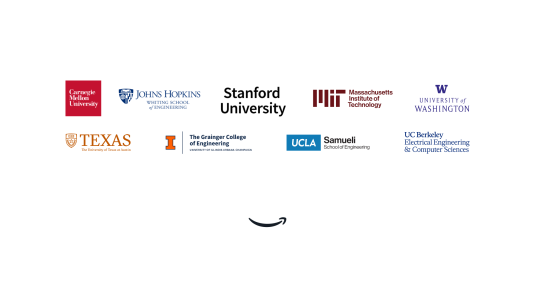To help expand the diversity of the talent that will shape the future of robotics, Amazon has invested in a number of academic engagements with colleges and universities, including a new collaboration with Hampton University.
At Hampton University, a historically black college and university (HBCU) based in Hampton, Virginia known for its cutting-edge STEM research, Amazon Robotics is funding the establishment of a robotics degree program.
By investing in developing Hampton’s robotics program, Amazon supports building expansive learning opportunities for faculty and students by offering cloud-based robotics research, infrastructure improvements, and STEM-based activities to increase the overall talent pipeline. The goal is to create an undergraduate curriculum that will lead to both advanced robotics degrees as well as robotics careers within industry.
“We are very thankful Amazon Robotics has invested in Hampton University and its students for this project which will enable the growth and development of the next generation of diverse STEM scholars,” says William R. Harvey, Hampton University president. “Amazon Robotics recognizes the stellar talent that comprises Hampton University’s faculty, staff, and students to launch this program. I look forward to seeing what innovations will blossom from this cutting-edge partnership.”
Amazon funding will assist with establishing a new research laboratory in an existing space; a one-year faculty position dedicated to artificial intelligence and machine learning; a senior capstone course where students will receive side-by-side mentorship from leading researchers, software developers, and engineers at Amazon; and the expansion of kindergarten through grade 12 programming, including an annual drone camp aimed at encouraging high school and middle school students from historically underrepresented backgrounds to pursue degrees in STEM and robotics.
“This will not only build infrastructure inside the school, but it also provides funding for Hampton to go out into the community,” says Tye Brady, chief technologist for Amazon Robotics. “That will allow Hampton to share the excitement of robotics and the excitement of engineering with those who may not have had exposure to it yet.”
Alissa Harrison, vice president for Information Technology at Hampton, says Hampton wanted to create something that would benefit the university — the students, faculty, and surrounding community — as a whole. “We wanted to do something that allowed us to both build up our infrastructure and increase our core competencies campus-wide,” she noted. “We wanted to do something different and innovative.”
“We decided to do something related to academics, research, and development with Amazon by placing emphasis on robotics as a way of teaching artificial intelligence and machine learning,” Harrison added.
Hampton’s existing relationship with Amazon — its computer science students participate in AWS training and certification — provided an avenue to explore the robotics opportunity. It also provided Hampton an opportunity to both revive a dormant project and to allow its faculty to expand their own knowledge.
“Several years back, we were engaged with a cross section of HBCUs in a robotics initiative to get our students interested in computer science through introducing them to robotics,” explained Jean Muhammad, chair of the Hampton computer science department. “That was a great project that fell to the wayside, and it included a course in robotics that students really liked. So we’re pleased to add robotics back. We're also very excited about getting more engaged with AI and machine learning.
"Quite a few of us have experience in AI, but we have not had as much experience in machine learning. I look at this as a way not only to get back into the robotics space, but for both our faculty — and then subsequently our students — to build capacity in those other areas that are all tied together. Our faculty is quite excited about this as well.”

Hampton officials stressed that the full-fledged nature of the Amazon collaboration is essential, both for Hampton’s students and for Amazon’s goal of increasing diversity within the robotics science and engineering communities.
“That's the thing that I like, the fact that Amazon is actively involved, not passively involved, in trying to help diversify the industry,” said Demetris Geddis, assistant dean and department chair of electrical and computer engineering. “We don't want Amazon to just throw money and say, ‘Please send us your best and brightest.’”
Hampton students will also receive free AWS credits, allowing them to utilize AWS tools and computational power for robotics projects. Hampton officials say they hope to eventually create a master’s degree in robotics for their students, and noted that the nature of Amazon’s support makes that much more achievable.
What does a successful program look like? It looks like a partnership; it looks like a true collaboration between Amazon and an HBCU. It looks like this.
"Amazon had a unique approach. They asked, ‘What do you want and what do you need?’ Then they said, ‘Put something together that's going to benefit you and let us see how we can help you achieve that,’” Muhammad said. “We have a lot of industries that approach us in engineering and computer science. It's not often that we get someone that comes in with that approach.”
Muhammad also emphasized that Amazon’s willingness to encourage and incorporate feedback from Hampton was a crucial part of the collaboration. “Sometimes we told Amazon, ‘This idea is great, but if you did this it would be greater.’ And then they said, ‘Don't worry, we'll get you that’ and ‘OK, we can do that.’ I haven't seen that before.”
“Not only does that support help ensure the program launches smoothly,” Harrison noted, “It also goes a long way toward ensuring it can be a success. What does a successful program look like? It looks like a partnership; it looks like a true collaboration between Amazon and an HBCU. It looks like this.”


























